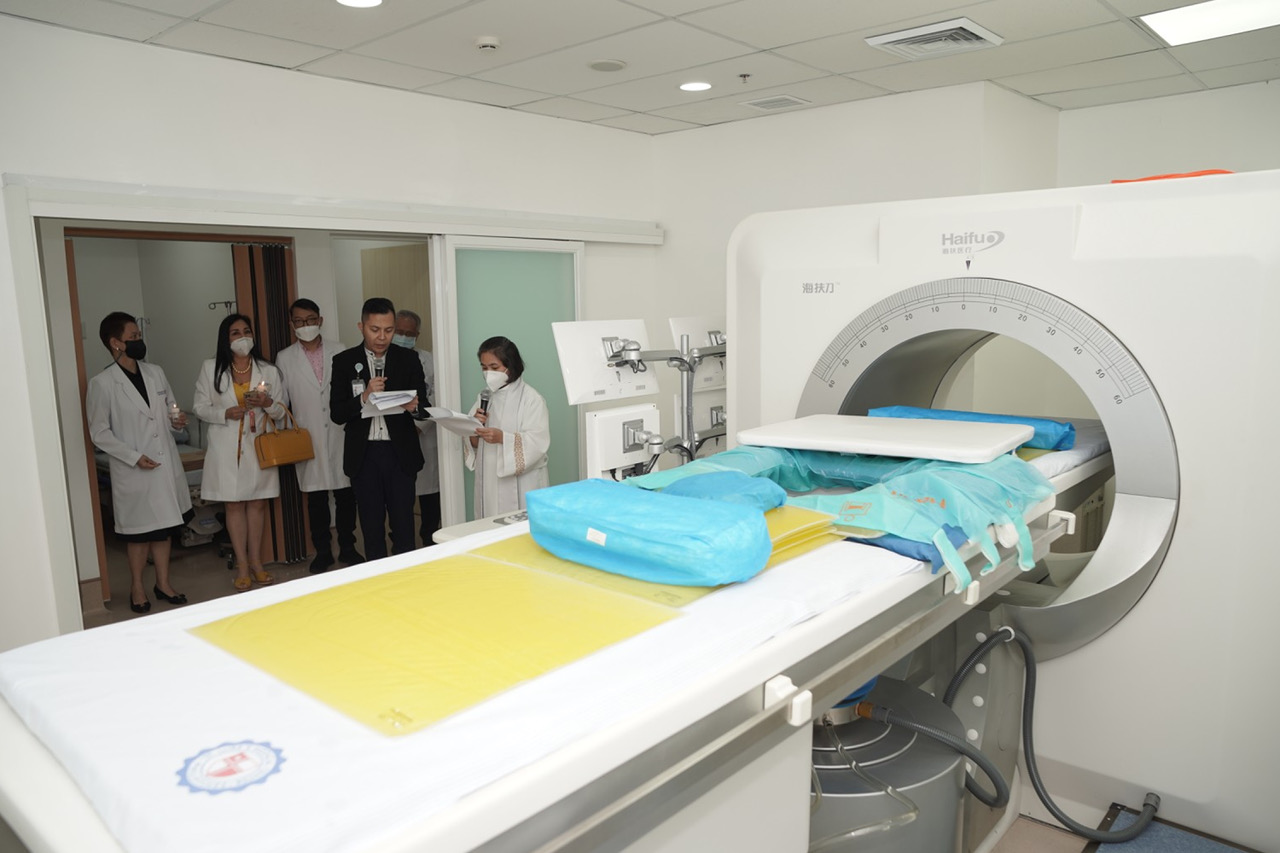Dubbed as HIFU for short, the machine is the first and so far only one of its kind in the country, which also shortens downtime, lessens the pain and minimizes complications, including blood loss. It’s a possible alternative for those who seek the removal of gynecological and hepatic masses.
By Alex Y. Vergara
Imagine a time when you need not go under the knife for such procedures as removal of gynecological and hepatic masses. When complications and blood loss related to such surgical procedures are minimized, if not eliminated. When surgical incisions and scarring become things of the past. When surrounding normal tissues are spared from damage during a procedure. Well, imagine no more.
St. Luke’s Medical Center-Global City recently announced its acquisition of a High-Intensity Focused Ultrasound (HIFU) machine, the first and so far only one of its kind in the Philippines. Drs. Ramon de Vera and Sandee Go, head and assistant head, respectively, of St. Luke’s HIFU Unit, talked about the machine’s features, including the best candidates to undergo a HIFU procedure.


“Since you don’t stick anything in the body or invade it during a surgery, this procedure is non-invasive,” De Vera said. “For example, in the case of liver cancer, all complications related to surgery are eliminated.”
De Vera, a surgeon, said using HIFU technology is even better compared to burning a liver tumor, a procedure that only works for smaller tumors. And unlike the latter procedure, HIFU doesn’t require the attending doctor to stick anything, even a needle, on the patient before addressing the issue.

To help patients and their families better understand what HIFU is, De Vera said the unit works like a microwave equipped with a magnifying glass. “We’re all familiar with the microwave whose basic function is to cook,” he said. “The HIFU is pretty much the same. Apart from heat, it cooks the tumor using the principle of focusing, which is similar to that tip of a magnifying glass placed directly under the sun.
As far as the liver is concerned, De Vera added, the HIFU can deal with all kinds of cysts and tumors, be they malignant or benign. Go, a gynecologist, on the other hand, uses the HIFU to treat myomas and adenomyosis.
“With regards to the length of the procedure, it’s a case-to-case basis, depending, for instance, on the size of the myoma,” she said. “For a 10-centimter myoma, for instance, it would usually take from one to two hours. Then patient needs to stay in the recovery room for another two, two-and-one half hours.”
If everything goes smoothly, the patient is discharged soon after the recovery period. Barring any complications, she is no longer required to stay confined overnight at the hospital.
HIFU shouldn’t be confused with the regular ultrasound machine, which doctors used to routinely see inside a patient’s body. The HIFU, so to speak, is a two-in-one machine that helps the attending doctor visualize what’s inside before zeroing in on the area that needs to be “microwaved.”
“The patient would be asked to lie on his front before an ultrasound machine, which would help us visualize what part to target using the same High-Frequency Ultrasound System,” said De Vera.
HIFU is not without its screening requirements. Added Go: If the patient opts to undergo HIFU instead of conventional operation, he or she still needs to undergo screening. We also need to know patient’s history and, if any, medical problems. Then we’re going to do a regular ultrasound on the patient to known where the lesion is. After which, we’re going to request for lab tests [from the patient] and practice simulation and positioning.”
The last step in the process is necessary for doctors to know if the “lesion” that needs to be targeted is accessible using the machine. Once everything is in order, the first step towards possible healing is about to be made, as patient and doctor may proceed with the procedure.





